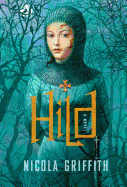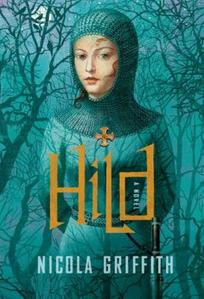

In the seventh-century Northumbrian court of King Edwin, his niece Hild rises to prominence as a seer through the machinations of her mother, Breguswith. In truth, the girl's "prophecy" is shaped by her extraordinary intelligence and powers of observation, which enable her to see patterns in the intrigues and political machinations of those around her. But danger is constant, and Hild must continuously prove her usefulness to King Edwin--or die.
Complicating matters is Hild's knowledge that Cian, her foster brother, is in fact her half-brother--a lineage that, if revealed, could make him appear a threat to the throne. Hild's challenges increase in complexity as her strong sense of duty, combined with love and compassion, repeatedly come into conflict with the demands of survival in the court of the king. Seeing everything, Hild is perpetually a guardian of secret knowledge--others' secrets, and her own.
Griffith brings a remarkable sensuousness to the setting, beautifully evoking the lush physicality of the joys, hardships and sheer work involved in a life so intertwined with the vagaries of the natural world. The language is strung with unexpected gemlike turns of phrase: women ride in a wagon "like coddled eggs," their boots "the colour of owl breasts."
As a woman of power and influence, Hild stands out in her time, yet the women in this world possess strength and complexity. While everyone orbits the king, Breguswith operates so cannily from the shadows that her effects on the court may be the most profound of all. Perhaps most intriguing about the portrayal of women in Hild is the lifelong bond between pairs of women, called gemæcce, who spin and card together from childhood until death, through marriage, sickness and childbearing. The relationship between gemæcce is as significant in its own way as marriage.
Though it is the richness of historical detail that may be most overtly noticeable, Hild is above all a story of love and friendship--and how the preservation of those things demands sacrifice. --Ilana Teitelbaum
Shelf Talker: A richly detailed historical epic inspired by the life of St. Hilda of Whitby, who in the seventh century was influential in spreading Christianity in Britain.

